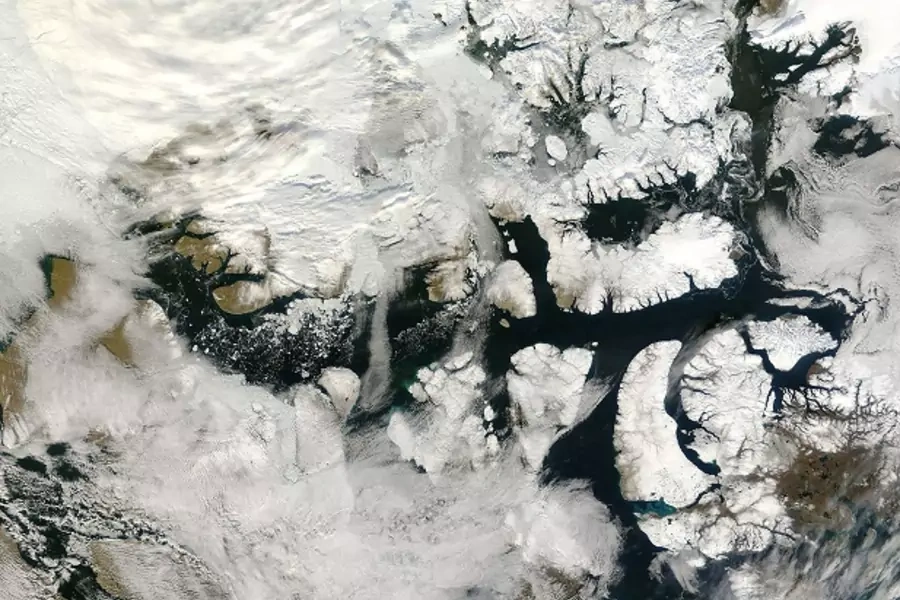U.S. Needs to Plan for Changes in the Arctic

The Arctic holds a grip on the public imagination as a frozen, remote, and inaccessible place – but the Arctic region is rapidly changing, and the United States would do well to take stock of the changing reality at the top of the world and plan for a very different future there. CFR is today releasing a new report on the Arctic. I asked my colleague Anya Schmemann to explain the stakes for the United States in the Arctic.
A new Independent Task Force report sponsored by CFR notes that the Arctic region is warming at twice the rate as the rest of the planet. The melting sea ice is opening up the region to new trade routes and commercial activities. Indeed, last summer a large passenger cruise ship sailed through the Northwest Passage for the first time in history. But with new opportunities come new risks, and the United States needs to bolster its strategic commitment to the region, invest in infrastructure and telecommunications, and safeguard the Arctic’s environment, people, and wildlife.
More on:
The United States is an Arctic nation thanks to Alaska, and it has significant strategic, economic, and scientific interests in the region. As the United States concludes its chairmanship of the Arctic Council this May, the Task Force finds that the United States lags behind other Arctic nations, such as Russia, that have updated their strategic and commercial calculations to take advantage of the changing conditions stemming from the opening of the region.
The report notes that while Russia has numerous ice-breaking vessels and China is building a third icebreaker, the United States owns only two operational icebreaking ships—one heavy icebreaker and one medium-weight icebreaker—to serve both the Arctic and the Antarctic. Noting that icebreakers are required for a range of maritime missions to support U.S. security, economic, and commercial needs, the Task Force recommends that the United States fund and build additional icebreakers.
The report, Arctic Imperatives: Reinforcing U.S. Strategy on America’s Fourth Coast, also finds that the United States needs greater investment in Alaskan infrastructure, including deepwater ports, roads, and reliable telecommunications, to support economic development and a sustained security presence in the region.
The Task Force identifies six main goals that U.S. policymakers should pursue to protect U.S. economic and strategic interests in the Arctic:
- Ratify the UN Convention on the Law of the Sea (UNCLOS). The Senate should help secure the United States’ legal rights to more than 386,000 square miles of subsea resources along its extended continental shelf by ratifying this treaty.
- Fund and maintain polar ice-breaking ships. Congress should approve funding for additional icebreakers to improve operational capacity in the Arctic, ideally to have at least three operational ships in the polar regions at any one time. Congress should also safeguard funding for the Coast Guard, which plays a critical role on the region.
- Improve Arctic infrastructure. Invest in telecommunications, energy, and other infrastructure in Alaska and find locations for safe harbor ports and a deepwater port.
- Strengthen cooperation with other Arctic nations. Continue diplomatic efforts within the Arctic Council and work with other Arctic states, including Russia, on confidence-building and cooperative security measures.
- Support sustainable development and Alaska Native communities. Uphold the Arctic Council’s focus on sustainable development, environmental protection, and continued involvement of the Arctic’s indigenous peoples.
- Fund scientific research. Sustain budget support for scientific research to understand the regional and global impact of accelerated climate change.
More on:
The Task Force is chaired by Thad Allen, retired admiral and former commandant of the U.S. Coast Guard, and Christine Todd Whitman, former administrator of the Environmental Protection Agency and governor of New Jersey, and is directed by Esther Brimmer, executive director and chief executive officer of NAFSA: Association of International Educators, and a recent CFR adjunct senior fellow.
 Online Store
Online Store